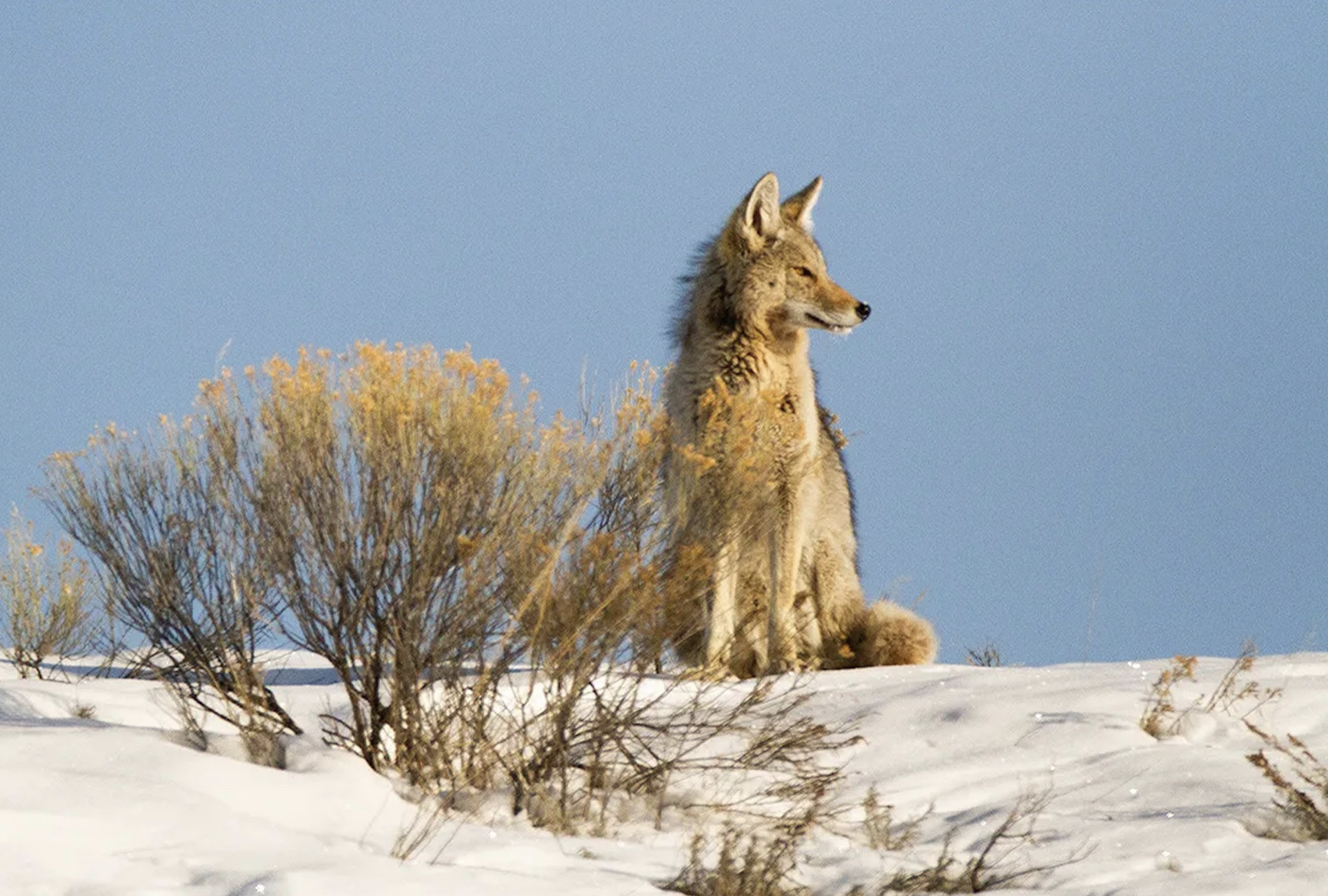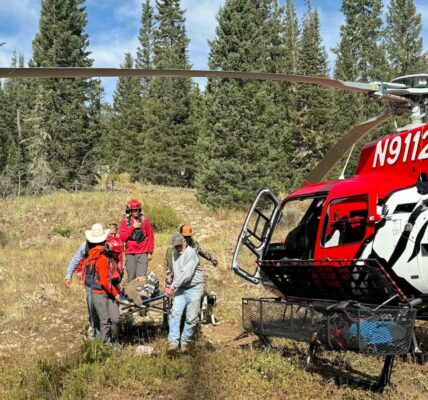
• State wildlife officials propose — and commissioners approve — a $200,000 bump in funding to kill coyotes from the air on deer fawning grounds.
By Mike Koshmrl, WyoFile.com
Last winter killed most of western Wyoming’s mule deer.
That prompted calls to kill predators, and wildlife managers listened — even though there was little scientific support to prove it would work to bring deer back.
Because of speculation that mountain lions would hold the deer population low, more were targeted — and killed — in the regions where winter hit mule deer the hardest.
There were outfitter calls to kill more black bears, too, though the Wyoming Game and Fish Department did not update its quotas to grant that request, citing the already heavy bear harvest.
The ecological and political implications of the historically severe winter that lasted well into spring 2023 still linger. For another predator species — coyotes — the implications remain as well.
Meeting Jan. 16 in Cheyenne, the Wyoming Game and Fish Commission approved a $200,000 sum requested by wildlife managers to supplement existing aerial gunning of coyotes in western and south-central parts of the state. Like lions and bears, coyotes dine on mule deer, especially fawns.
“Last spring we recommended it would not be the time to go do it because we had [deer] coming through the winter in such poor condition,” Game and Fish Chief Warden Rick King told the commission. “We recommended that we wait and reevaluate that this winter, and we’ve done that. We feel that this would be the time, if any, to do predator control work action like this.”
Although it hasn’t been decided where and when the funds will be expended, King did specify that the funding would be routed to the federal government: specifically, a branch of the U.S. Department of Agriculture known as Wildlife Services.
“We would contract with Wildlife Services to do the work,” King said. “Our local managers would identify key fawning areas to go do that work. They’d get started this spring, and implement that control action before, during and potentially just after the fawning.”
The Wyoming Game and Fish Department putting its budget, which is funded through hunting and fishing license revenue, toward aerial predator gunning is nothing new. The $200,000 will come from the agency’s discretionary pot of money, Game and Fish director Brian Nesvik said in the meeting.
Game and Fish has routinely helped fund the Wyoming Animal Damage Management Board, which had an overall budget of $4.2 million last year — a record. Projects the wildlife management agency have paid for include research, but also special predator-killing efforts aimed at protecting species like mule deer, pronghorn and sage grouse.
There’s also precedent for extra Game and Fish spending on coyote killing in the aftermath of severe winters that hit ungulate herds hard. After the big winter of 2016-’17, the agency spent $100,000 to shoot coyotes from aircraft on mule deer fawning grounds in the Little Mountain area and southern Wyoming Range. That effort, also contracted to Wildlife Services, yielded 177 dead coyotes, which pencils out to $565 per canine.
Before his board unanimously approved the $200,000 in extra 2024 funding, Game and Fish Commission President Ralph Brokaw asked if the 2016-’17 coyote gunning had any effect on mule deer fawn survival.
“What bang did we get for our buck?” Brokaw asked.
There’s no evidence, the chief warden told him, that it helped.
We don’t have any direct correlation to show that predator control work created any kind of spike in fawn numbers,” King said. “We just don’t have that data, it’s really tough to tease that out.”
WyoFile is an independent nonprofit news organization focused on Wyoming people, places and policy.





